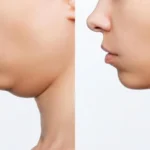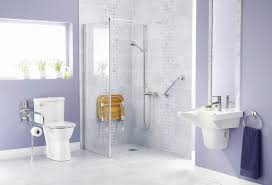When it comes to improving the bathing experience for individuals with mobility challenges, bathing aids play a pivotal role. These specially designed products are created to enhance safety, comfort, and independence for the elderly and disabled, allowing them to maintain a sense of dignity and autonomy. Whether it’s making daily hygiene routines safer or helping individuals regain confidence in the bathroom, bathing aids are crucial in transforming any bathroom into a space that meets the needs of those with limited mobility.
What Are Bathing Aids and Why Are They Important?
Bathing aids are a range of products designed to assist people with mobility difficulties when bathing. These products help individuals perform daily hygiene tasks more safely and independently, minimizing the risk of accidents such as slips and falls. For elderly individuals, those recovering from surgery, or people with disabilities, bathing aids offer a practical solution to the challenges posed by traditional bathrooms.
Some common bathing aids include grab bars, shower chairs, non-slip mats, adjustable shower heads, and toilet seat cushions. All of these products serve the purpose of improving comfort, stability, and ease of access to the bathroom, ensuring a safer and more enjoyable bathing experience.
Types of Bathing Aids Available
- Grab Bars and Shower Rails
One of the most essential bathing aids is the grab bar. Installed in showers, bathtubs, or next to toilets, grab bars provide extra support, helping individuals maintain their balance while standing, sitting, or transitioning in and out of the shower. They come in various designs, including fixed, rotating, and foldable models, offering flexibility based on specific needs. - Shower Chairs and Bath Stools
For individuals who struggle with standing for long periods or sitting on the floor, shower chairs and bath stools are excellent options. These aids provide a stable seating option inside the shower or bath, allowing users to bathe comfortably while remaining seated. Some shower chairs even feature adjustable heights to cater to different user preferences. - Non-Slip Mats and Bath Rugs
Safety is paramount in any bathroom, and non-slip mats or rugs can be a game-changer. These mats, designed to stay firmly in place, help reduce the risk of slipping on wet bathroom floors. With textured surfaces and suction cups, non-slip mats ensure that users maintain stability while stepping in and out of the shower or bathtub. - Adjustable Shower Heads
For individuals who need extra reach or flexibility while bathing, adjustable shower heads are a fantastic addition. These shower heads can be handheld and adjusted to different heights, making it easier for users to wash themselves without having to strain or reach. This convenience is especially beneficial for people with arthritis or those using wheelchairs. - Toilet Seat Cushions and Risers
Toilet seat cushions and risers are essential aids that provide comfort and support for individuals with joint pain or limited mobility. These cushions help to relieve pressure on the body, making it easier to sit and stand. Additionally, risers elevate the seat, reducing the effort required for users to get up and down. - Waterproof Cushions and Bathrobes
Many individuals find comfort in using specially designed waterproof cushions and bathrobes. These products enhance the bathing experience by keeping the user comfortable, dry, and warm, particularly after taking a bath or shower.
How Bathing Aids Improve Independence and Quality of Life
The most significant benefit of using bathing aids is the increased independence they provide. When individuals are able to safely and confidently bathe without assistance, it significantly boosts their sense of autonomy and dignity. Bathing, a task many take for granted, can become a daunting or even dangerous activity for those with mobility challenges. Bathing aids remove barriers, making these everyday activities accessible to all.
Additionally, using these aids helps reduce the risk of falls or accidents. Statistics show that falls in the bathroom, particularly in the shower or bath, are one of the leading causes of injury among the elderly. According to the Centers for Disease Control and Prevention (CDC), one out of every four older adults falls each year, with many of these falls occurring in the bathroom. By incorporating bathing aids into the bathroom, these risks can be minimized, offering peace of mind to both users and caregivers.
Choosing the Right Bathing Aids for Your Needs
Choosing the right bathing aids depends on the individual’s specific needs, preferences, and the space available in the bathroom. Here are some factors to consider when selecting bathing aids:
- Level of Mobility
The user’s ability to move independently plays a significant role in determining which aids are most suitable. For instance, someone who requires a wheelchair may benefit more from wet rooms or walk-in showers, while a person with limited balance may find grab bars or shower chairs helpful. - Bathroom Layout
It’s essential to consider the layout of the bathroom when choosing bathing aids. The size of the bathroom will determine whether certain aids, such as shower chairs or risers, will fit comfortably. If the bathroom is small, compact options like folding shower stools may be ideal. - Ease of Use
Bathing aids should be easy to use and maintain. Adjustable products, such as showerheads or grab bars, offer flexibility, while non-slip mats or toilet seat cushions require little to no maintenance. Ensure that the aids chosen are not only practical but also convenient for the user. - Safety Features
The primary function of bathing aids is to improve safety. When choosing any product, ensure it has essential safety features, such as non-slip bases, sturdy construction, and proper weight capacity. Always opt for high-quality, durable products to ensure long-lasting use.
Case Studies: Real-Life Benefits of Bathing Aids
To further understand the value of bathing aids, let’s take a look at some real-life case studies that showcase their impact:
- Case Study 1: Increasing Independence for the Elderly
A 75-year-old woman with arthritis found daily showers to be painful and risky. After installing a shower chair, grab bars, and a handheld showerhead, she was able to bathe comfortably and independently. The added safety features allowed her to regain her confidence and feel more in control of her daily routine. - Case Study 2: Aiding Individuals with Physical Disabilities
A man recovering from spinal surgery was struggling to use the bathroom due to limited mobility. Installing a wet room with a roll-in shower and non-slip mats significantly improved his bathing experience. He was able to use the bathroom with minimal assistance, improving his overall quality of life during recovery. - Case Study 3: Comfort for Caregivers and Loved Ones
A caregiver for an elderly relative found that using toilet seat risers and bath stools eased the physical strain of assisting with daily hygiene. These aids not only provided the elderly individual with greater comfort but also made the caregiver’s job easier and less physically demanding.
Why Bathing Aids Are Essential for Safety and Comfort
Incorporating the right bathing aids into your bathroom can drastically improve safety, comfort, and independence for individuals with mobility challenges. Whether you’re looking for grab bars, shower chairs, or non-slip mats, products like these can make a world of difference.
To explore a wide range of bathing aids designed to meet the needs of people with mobility issues, visit Bathroom Helper UK. With expert advice and top-quality products, you can transform your bathroom into a safer, more accessible space for everyone.
FAQs
1. Are bathing aids covered by insurance?
Many insurance plans, including some NHS programs, may cover the cost of bathing aids, especially if they are deemed medically necessary. It’s important to check with your insurance provider or healthcare professional to understand what is covered.
2. Can I install bathing aids myself?
While some aids, such as non-slip mats, are easy to install on your own, others, like grab bars, require proper installation for safety. It’s best to hire a professional to ensure that all products are installed securely.
3. Where can I purchase bathing aids?
Bathing aids can be purchased from specialized retailers, including websites like Bathroom Helper UK, which offers a wide range of high-quality mobility aids for the bathroom.










